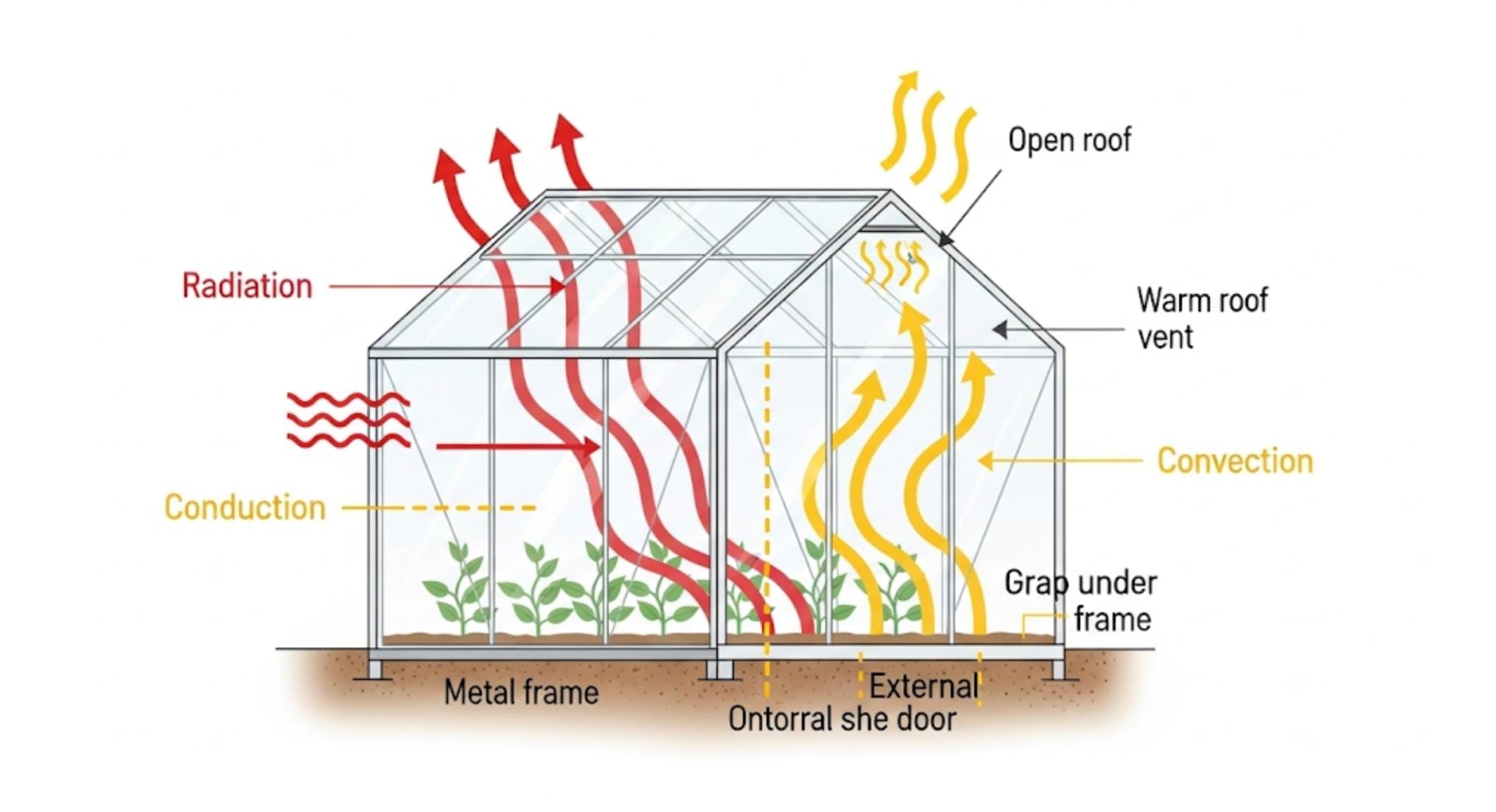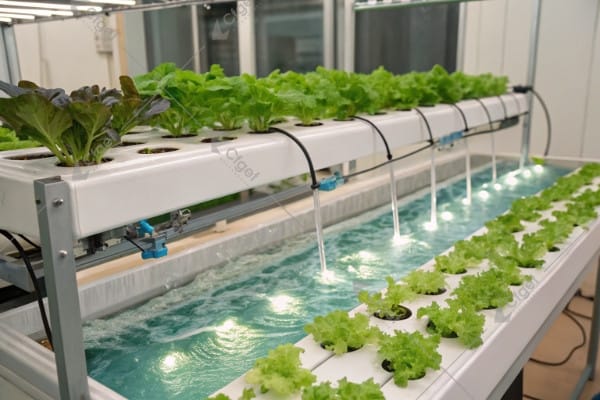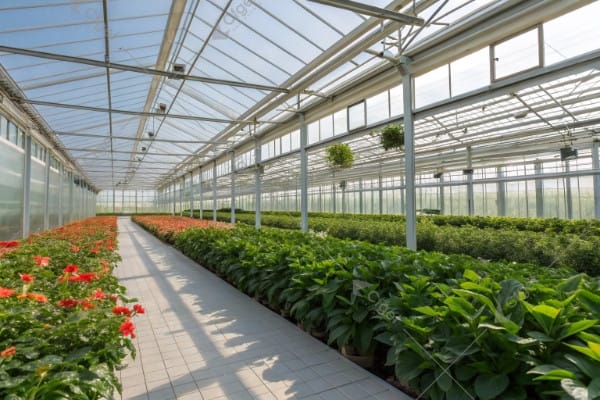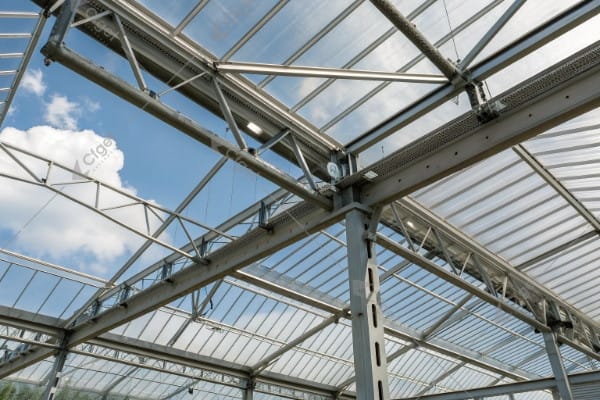Growing tomatoes outdoors exposes your plants to unpredictable weather, pest invasions, and limited growing seasons. Many gardeners watch helplessly as their carefully tended tomato plants suffer from blight, insect damage, or early frost, resulting in disappointing harvests.
A greenhouse creates a protected environment that transforms tomato growing results by extending the growing season by months, maintaining ideal temperature and humidity levels, preventing pest and disease problems, and dramatically increasing yields. This controlled setting allows for consistent, high-quality tomato production regardless of outside conditions.
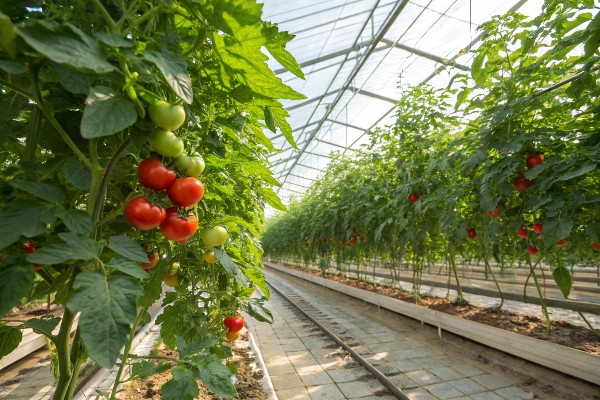
I remember my first attempt at growing tomatoes outdoors in our climate. Despite careful attention, late blight decimated my crop just as the fruits began ripening. The next year, I installed a small greenhouse, and the difference was remarkable—my harvest tripled and continued well into fall. This transformation from frustration to abundance sparked my passion for greenhouse growing, eventually leading to my career designing growing environments for both hobby gardeners and commercial producers across various climates.
Don’t Miss:——Why Use a Greenhouse? Unlocking Year-Round Growth & Protection
Maximize Yield & Extend Your Harvest Season with a Greenhouse?
Short growing seasons and weather fluctuations drastically limit outdoor tomato production. In many regions, growers watch frustrated as their tomato plants are killed by early frosts before reaching their full productive potential.
Greenhouses dramatically extend the tomato growing season, allowing for earlier planting in spring and continued harvest well into fall or even year-round in some setups. This extension can increase annual yields by 3-5 times compared to outdoor growing, with harvest periods stretching from a typical 3 months to 8-12 months.
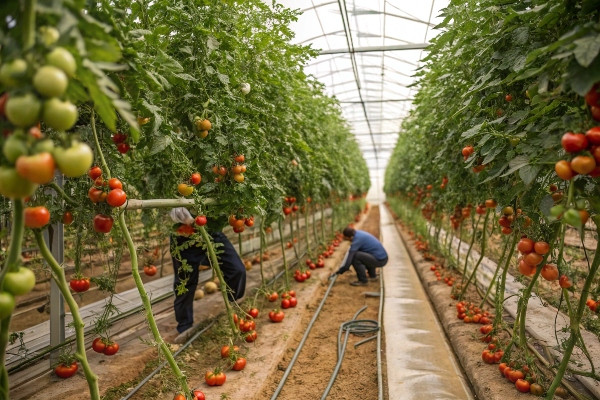
The ability to maximize yields and extend harvest seasons represents perhaps the most compelling reason commercial growers and serious hobbyists invest in greenhouse structures for tomato production. During my years working with CFGET, I’ve witnessed remarkable transformations when growers transition from outdoor to protected cultivation.
The season extension benefits begin immediately in spring. While outdoor gardeners wait for soil temperatures to warm and frost danger to pass, greenhouse growers can start plants 4-6 weeks earlier. This early start translates directly to earlier harvests—often allowing growers to bring tomatoes to market when prices are highest. I’ve worked with market gardeners who consistently have ripe tomatoes 4-5 weeks before their competitors, commanding premium prices that significantly boost their seasonal profits.
The fall extension proves equally valuable. Standard field tomato production typically ends with the first frost, often when plants are still loaded with green fruit. In a greenhouse environment, these same plants can continue producing for 1-3 additional months depending on the climate and heating capabilities. During a consultation with a family farm in the Midwest, we calculated that their greenhouse extension allowed them to harvest an additional 1,200 pounds of tomatoes after their outdoor plants had been killed by frost.
For commercial operations, season extension directly impacts profitability through more efficient use of growing space. Traditional outdoor tomato production in temperate climates yields one crop cycle annually. With proper greenhouse management, growers can achieve 1.5 to 2 complete crop cycles per year in the same footprint. I’ve helped design greenhouse systems for commercial operations that maintain continuous production by staggering plantings—harvesting from mature plants while simultaneously starting new crops for seamless production.
The yield increase goes beyond just a longer season—greenhouse-grown tomatoes typically produce more fruit per plant throughout their life cycle. This production boost comes from multiple factors: optimized growing conditions, protection from stress, and the ability to use high-yielding varieties that might not perform well outdoors. During crop trials at a client’s facility, we documented yield increases of 200-300% per square meter compared to their previous outdoor production.
For hydroponic systems within greenhouses, the yield advantages become even more pronounced. Precise nutrient delivery and ideal root conditions allow plants to direct maximum energy toward fruit production rather than searching for water or nutrients. One of our commercial clients transitioned from soil-based greenhouse production to a hydroponic system and recorded a 40% additional yield increase from the same growing space.
Growing vertically further maximizes production in greenhouse environments. The controlled conditions allow for effective trellising and plant management impossible in outdoor settings where wind and weather interfere. Modern commercial operations often train plants to heights of 15-30 feet, continuously lowering the growing vines as they harvest from the bottom. This technique, known as the "lower and lean" method, allows a single plant to produce for 8-11 months in climate-controlled facilities.
Don’t Miss:——What Makes a Greenhouse Ideal for Orchids? Key Features Explained
Yield Comparison: Greenhouse vs. Outdoor Tomato Production
| Production Factor | Outdoor Growing | Basic Greenhouse | Advanced Greenhouse |
|---|---|---|---|
| Growing Season | 3-5 months | 6-9 months | 8-12 months (potentially year-round) |
| Yield per Plant | 10-25 lbs | 20-40 lbs | 30-60+ lbs |
| Production Cycles per Year | 1 | 1-2 | 1-3 (with succession planting) |
| First Harvest Timing | 75-85 days after planting | 65-75 days after planting | 60-70 days after planting |
| Production Consistency | Variable, weather-dependent | Mostly consistent | Highly consistent, predictable |
Optimal Environment Control for Healthy Tomato Plants?
Tomatoes struggle when exposed to temperature extremes, inconsistent watering, and humidity fluctuations. Even experienced gardeners face challenges providing ideal growing conditions in unpredictable outdoor environments, resulting in stressed plants, reduced yields, and lower quality fruit.
Greenhouses enable precise control over critical environmental factors that directly impact tomato health and productivity. Maintaining temperature ranges of 65-85°F day/55-65°F night, humidity levels of 65-75%, and consistent watering creates optimal growing conditions that maximize photosynthesis, pollination, and fruit development.
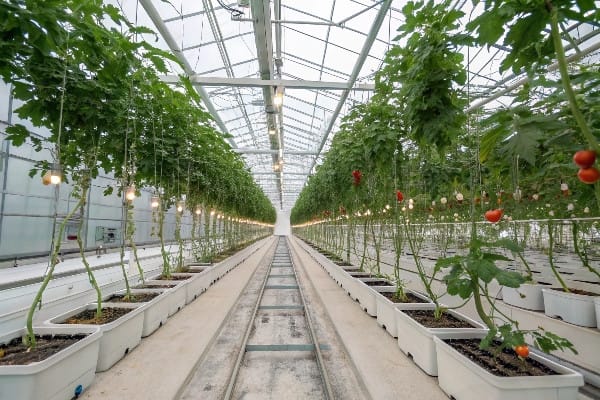
The ability to create and maintain ideal growing conditions represents the fundamental advantage of greenhouse tomato production. Through my work designing greenhouse systems across various climates, I’ve seen firsthand how environmental control transforms struggling tomato crops into consistently productive powerhouses.
Temperature management stands as perhaps the most critical factor in successful tomato cultivation. These plants have relatively narrow temperature preferences for optimal growth. Daytime temperatures between 75-85°F (24-29°C) maximize photosynthetic efficiency and fruit development, while night temperatures of 55-65°F (13-18°C) encourage proper fruit set and reduce respiration losses. When temperatures fall below 55°F (13°C) or exceed 90°F (32°C) for extended periods, plants experience stress that reduces yields and fruit quality.
Greenhouse structures provide the foundation for temperature control through passive solar heating and insulation properties. In basic hobby greenhouses, this passive control alone can extend growing seasons significantly. For more serious production, active heating and cooling systems become essential. During a project for a commercial tomato grower in Central Asia, we implemented a comprehensive climate control system that maintained ideal temperature ranges despite outdoor fluctuations from 20°F to over 100°F (-6°C to 38°C). This temperature stability resulted in year-round production previously impossible in their region.
Humidity control significantly impacts both plant health and fruit quality in tomato production. The ideal range of 65-75% relative humidity promotes proper transpiration and pollination while minimizing disease pressure. Excessive humidity (above 85%) creates favorable conditions for fungal diseases like gray mold and leaf mold, while insufficient humidity (below 50%) causes pollination failures and fruit disorders like blossom end rot. Modern greenhouse designs incorporate automated ventilation, circulation fans, and sometimes dehumidification equipment to maintain this optimal range.
Light management directly influences tomato yield and quality. These fruiting plants have high light requirements, needing a minimum of 6-8 hours of direct sunlight equivalent for proper production. In greenhouse environments, we can optimize light through strategic glazing materials, supplemental lighting, and reflective surfaces. During a consulting project for winter tomato production in Northern Europe, we implemented LED supplemental lighting that increased winter yields by 35% while reducing heating costs through precisely targeted light delivery.
Water management represents another area where greenhouse production excels. Consistent, precise irrigation prevents stress cycles that lead to fruit splitting, blossom end rot, and reduced yields. Advanced greenhouse operations often utilize automated drip systems that deliver water directly to the root zone based on actual plant needs rather than arbitrary schedules. This precision reduces water usage while improving plant health and production. In one water-conscious installation in the Mediterranean region, our automated irrigation system reduced water consumption by 40% while simultaneously increasing yields.
Carbon dioxide enrichment offers significant production advantages in sealed greenhouse environments. Since plants consume CO₂ during photosynthesis, maintaining elevated levels (typically 800-1200 ppm versus ambient 400 ppm) can boost growth rates and yields by 20-30%. This technology becomes particularly valuable during winter months when reduced ventilation naturally depletes CO₂ levels in the greenhouse. Several of our commercial clients have implemented CO₂ enrichment systems with impressive results—one operation in Europe reported a 28% yield increase after installation.
Fertigation—the precise delivery of nutrients through irrigation systems—allows for optimal plant feeding impossible in outdoor environments. Modern greenhouse tomato production typically utilizes complete nutrient solutions delivered directly to the root zone, eliminating the guesswork and inconsistency of traditional fertilization methods. This precise feeding maximizes plant health while minimizing environmental impact from excess fertilizer runoff.
Environmental Parameters for Optimal Tomato Production
| Parameter | Ideal Range | Impact on Plants | Greenhouse Control Methods |
|---|---|---|---|
| Day Temperature | 75-85°F (24-29°C) | Photosynthesis rate, growth speed | Ventilation, evaporative cooling, shade systems |
| Night Temperature | 55-65°F (13-18°C) | Fruit set, energy conservation | Heating systems, thermal screens, insulation |
| Relative Humidity | 65-75% | Pollination success, disease pressure | Ventilation, circulation fans, dehumidifiers |
| Light Levels | 20-30 mol/m²/day | Overall productivity, fruit quality | Glazing selection, supplemental lighting, shade |
| CO₂ Levels | 800-1200 ppm | Photosynthetic efficiency, growth rate | CO₂ generators, air exchange management |
| Root Zone Moisture | Consistent, moderate | Nutrient uptake, fruit development | Drip irrigation, moisture sensors, automation |
Protecting Tomatoes from Pests, Diseases, and Weather?
Outdoor tomato cultivation leaves plants vulnerable to devastating pest infestations, disease outbreaks, and destructive weather events. Many gardeners lose entire crops to late blight, tomato hornworms, or splitting from inconsistent rainfall—frustrations that seem impossible to overcome.
Greenhouses create a protective barrier that dramatically reduces pest pressure, prevents weather-related damage, and creates conditions unfavorable to many common tomato diseases. This protection often eliminates the need for chemical interventions and ensures consistent production quality regardless of outdoor conditions.

The protective function of greenhouse structures represents a significant advantage for tomato cultivation that I’ve observed consistently throughout my career designing growing environments. In my work with both commercial producers and passionate hobbyists, this protection consistently ranks among the top reasons growers invest in greenhouse infrastructure.
Disease prevention stands as perhaps the most valuable protective benefit for tomato cultivation. Outdoor tomato plants commonly suffer from devastating fungal diseases like late blight (Phytophthora infestans), early blight (Alternaria solani), and Septoria leaf spot—conditions that can destroy entire crops within days under favorable conditions. The controlled environment of a greenhouse interrupts disease cycles by preventing prolonged leaf wetness, controlling humidity, and eliminating rain splash that spreads soil-borne pathogens.
One particularly memorable consultation involved a small commercial grower who had lost their entire field tomato crop to late blight three years in a row. After implementing our greenhouse design with proper ventilation and spacing, they completed their first disease-free season despite late blight affecting all neighboring farms. The return on their greenhouse investment occurred within the first production year.
Pest management becomes significantly more effective in greenhouse environments. The physical barrier prevents many common tomato pests like hornworms, stink bugs, and fruit worms from accessing plants. For smaller pests that might find entry, the enclosed environment enhances the effectiveness of biological controls like predatory insects and beneficial nematodes. During a project with an organic tomato producer in Central America, we designed a greenhouse system that incorporated insect screening and beneficial habitat areas, reducing pest damage by over 80% compared to their previous open-field production.
Weather protection provides immediate, tangible benefits for tomato quality and consistency. Outdoor tomatoes frequently suffer from cracking and splitting during heavy rainfall followed by sunshine—a common occurrence in many growing regions. Wind damage breaks branches and exposes plants to infection, while hail can destroy entire crops in minutes. I’ve worked with growers who calculated that a single prevented hail event paid for their entire greenhouse investment.
Temperature extremes represent another weather factor that greenhouses effectively mitigate. Tomato pollen becomes sterile above 90°F (32°C) and below 55°F (13°C), causing flower drop and failed fruit set during heat waves or cool periods. The moderated environment within a greenhouse prevents these reproductive failures, maintaining consistent production throughout the season. One commercial client in a region with highly variable spring temperatures reported a 40% increase in early season fruit set after transitioning to greenhouse production.
Soil quality and health remain protected in greenhouse environments. In outdoor cultivation, heavy rainfall can leach nutrients, compact soil, and promote erosion. Greenhouse growing protects soil structure and fertility, allowing for the development of rich, biologically active growing media over time. For operations utilizing soilless methods, the greenhouse environment enables precise control over root zone conditions impossible in outdoor settings.
Water conservation represents an increasingly important protective function as climate changes impact many growing regions. Greenhouse tomato production typically uses 60-80% less water than field production for equivalent yields. This efficiency comes from reduced evaporation, precise delivery, and the ability to capture and reuse irrigation water. During a greenhouse design project in a drought-prone region, we implemented water recirculation systems1 that reduced consumption by 75% compared to the client’s previous field operation.
Common Threats to Tomato Production and Greenhouse Solutions
| Threat Category | Examples | Impact on Field Production | Greenhouse Protection Methods |
|---|---|---|---|
| Fungal Diseases | Late blight, early blight, leaf mold | Crop failure, reduced yields | Climate control, airflow management, plant spacing |
| Bacterial Diseases | Bacterial spot, bacterial canker | Reduced marketability, yield loss | Entry control, sanitation protocols, resistant varieties |
| Insect Pests | Hornworms, aphids, whiteflies | Direct damage, virus transmission | Physical barriers, biological controls, monitoring systems |
| Extreme Weather | Hail, heavy rain, wind, frost | Physical damage, crop loss | Structural protection, climate control systems |
| Temperature Extremes | Heat waves, cold snaps | Failed fruit set, stunted growth | Heating, cooling, shade systems, thermal screens |
| Water Issues | Drought, flooding, inconsistent supply | Stress, splitting, blossom end rot | Precision irrigation, water recycling, consistent delivery |
Essential Greenhouse Features for Successful Tomato Cultivation?
Setting up a greenhouse without understanding tomato-specific requirements leads to disappointing results and wasted investment. Many new greenhouse owners struggle with inadequate structures, improper equipment, or inefficient layouts that fail to address the unique needs of tomato plants.
Successful tomato greenhouses incorporate proper ventilation systems, sturdy trellising for vertical growth, adequate growing space for root development, and efficient irrigation delivery. These essential features support the vigorous growth habit of tomatoes while maximizing production in limited space.
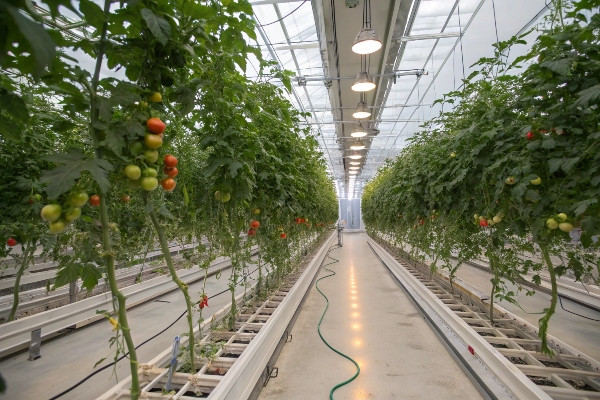
The specific structural and equipment needs for successful tomato cultivation have been a central focus throughout my career designing greenhouse systems. Having worked with operations ranging from hobby gardens to multi-hectare commercial facilities, I’ve identified key features that consistently contribute to successful tomato production regardless of scale.
Proper ventilation systems top the list of essential features for tomato greenhouses. These vigorous plants generate significant moisture through transpiration, creating humidity that must be managed to prevent disease. Additionally, tomatoes benefit from air movement that strengthens stems and prevents pollen from becoming too moist for effective pollination. In basic hobby greenhouses, this might mean sufficiently sized roof vents and side wall openings with circulation fans. For commercial operations, we typically recommend automated vent systems coupled with horizontal airflow fans positioned to create consistent air movement throughout the growing space.
During a recent project for a tomato producer in Southeast Asia, we implemented a hybrid ventilation system that combined natural ventilation with strategic fan placement to manage the extreme humidity of their region. This system reduced their previous disease pressure by over 70% while simultaneously improving pollination and fruit set during the most challenging months of their growing season.
Vertical growing support structures are crucial given tomatoes’ indeterminate growth habit, which can extend plants to heights of 20+ feet in optimal conditions. Commercial greenhouse designs must accommodate this vertical growth through adequate height and proper support systems. Modern trellising approaches include overhead support wires, drop strings, and specialized clips that secure plants without damaging stems. The "lower and lean" technique commonly used in commercial production requires specific structural considerations, including offset support wires and clear pathways for plant movement.
In a project for a commercial operation transitioning from field to greenhouse production, we designed a trellising system that increased their production density by 40% while improving fruit quality through better light exposure and air circulation. This vertical approach transformed their yield potential within the same greenhouse footprint.
Irrigation systems for greenhouse tomatoes must balance precision, reliability, and labor efficiency. Drip irrigation has become the standard for commercial production, delivering water and nutrients directly to the root zone while minimizing leaf wetness. Advanced systems incorporate soil moisture sensors or growing media weight measurements to automate irrigation based on actual plant needs rather than fixed schedules. This precision prevents both water stress and overwatering—common causes of fruit quality issues like cracking and blossom end rot.
For a water-conscious operation in an arid region, we implemented a sensor-based irrigation system that reduced their water usage by 35% while simultaneously increasing marketable yield by eliminating irrigation-related quality issues. The return on investment for this system occurred within the first production year through reduced resource costs and improved crop value.
Growing media and container systems significantly impact tomato health and productivity. While some operations maintain soil-based systems, many commercial producers have transitioned to soilless media in containers or slabs that optimize root health and nutrient delivery. These systems range from rockwool slabs and coco coir bags to sophisticated Dutch bucket systems with recirculating nutrient solutions. The appropriate choice depends on operation scale, technical capacity, and water quality considerations.
During consultation with a family operation transitioning from soil to soilless production, we identified a coco coir bag system that matched their technical capabilities while dramatically improving root health and yield consistency. This transition increased their marketable yield by 25% while reducing fertilizer costs through more efficient nutrient delivery.
Climate control equipment specifications must align with tomato-specific requirements. Heating systems should maintain minimum night temperatures of 55°F (13°C) for proper fruit development, while cooling capabilities must prevent daytime temperatures from exceeding 90°F (32°C) for extended periods. In regions with high light intensity, shade systems become essential to prevent leaf scorch and fruit sunburn during peak summer conditions.
For a greenhouse operation in an extreme continental climate, we designed a comprehensive climate management system incorporating in-floor radiant heating, evaporative cooling, automated shade screens, and energy curtains for night insulation. This integrated approach maintained ideal growing conditions despite outside temperature swings from -4°F to 104°F (-20°C to 40°C), enabling year-round production previously impossible in their region.
Essential Tomato Greenhouse Components by Production Scale
| Component | Small-Scale/Hobby Implementation | Commercial Implementation | Purpose |
|---|---|---|---|
| Ventilation | Manual roof vents, side vents, circulation fans | Automated vent motors, HAF fans, potential forced-air systems | Temperature control, humidity management, air movement |
| Growing Supports | Simple string trellising, stake cages | Overhead support wires, rollerhooks, drop strings | Vertical growth management, plant support, maximizing space |
| Irrigation | Basic drip lines, manual timers | Automated drip with moisture sensors, potential recirculating systems | Precise water/nutrient delivery, labor reduction |
| Growing Media | Soil-based beds, basic containers | Rockwool slabs, coco coir bags, hydroponics | Root health optimization, disease prevention, nutrient control |
| Climate Control | Passive systems, basic heaters | Integrated heating/cooling, environmental computers | Maintaining optimal temperature ranges, seasonal adaptability |
| Plant Spacing | 2-4 plants per m² | 2.5-3.5 plants per m² | Balancing density with light penetration and airflow |
Conclusion
A greenhouse transforms tomato growing results by creating protected environments that extend seasons, optimize growing conditions, prevent common problems, and maximize yields. With the right structure and equipment, you can enjoy abundant, high-quality harvests that would be impossible in outdoor settings.
Explore how water recirculation systems can significantly reduce water usage and improve sustainability in greenhouse operations. ↩

